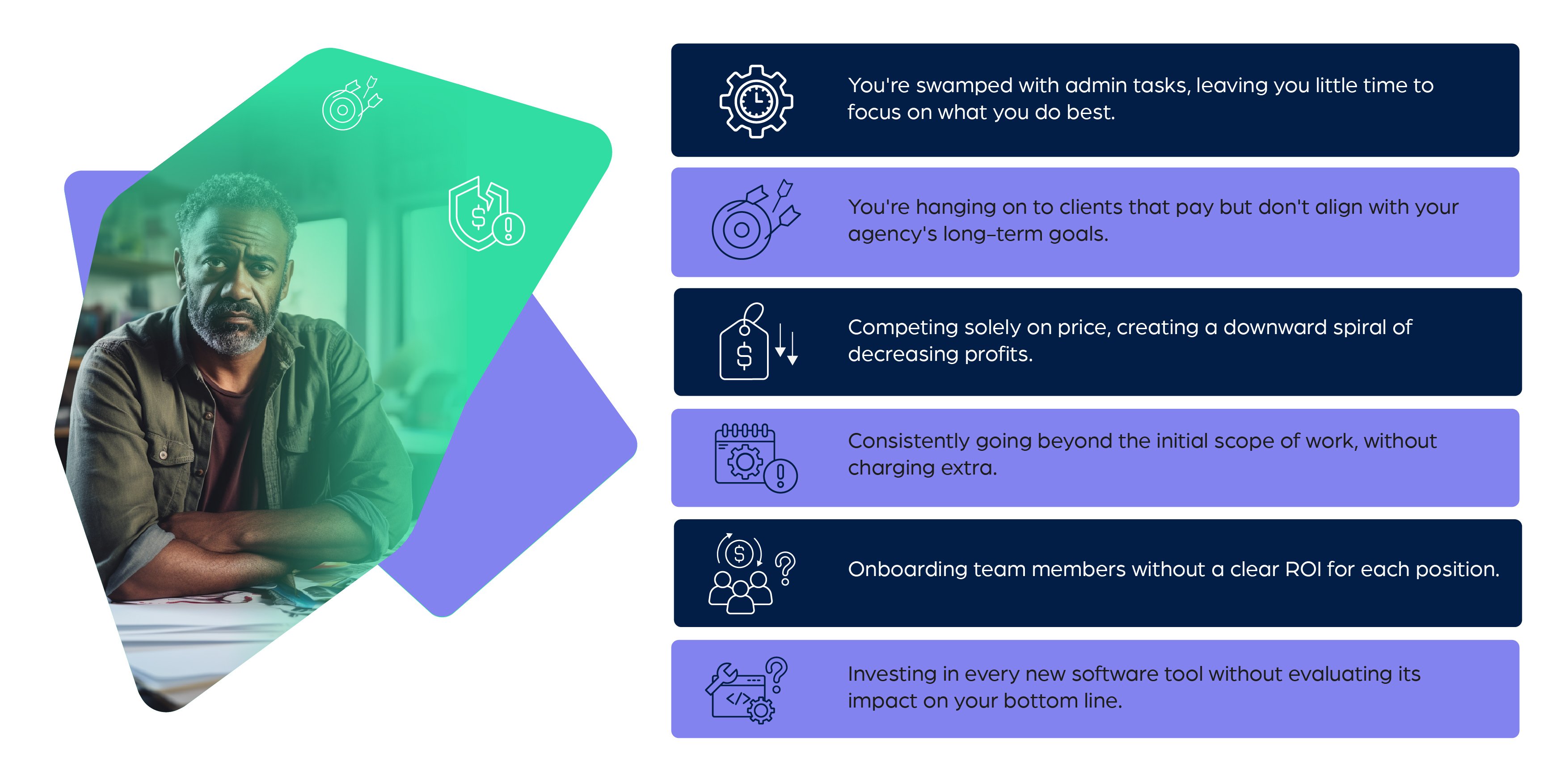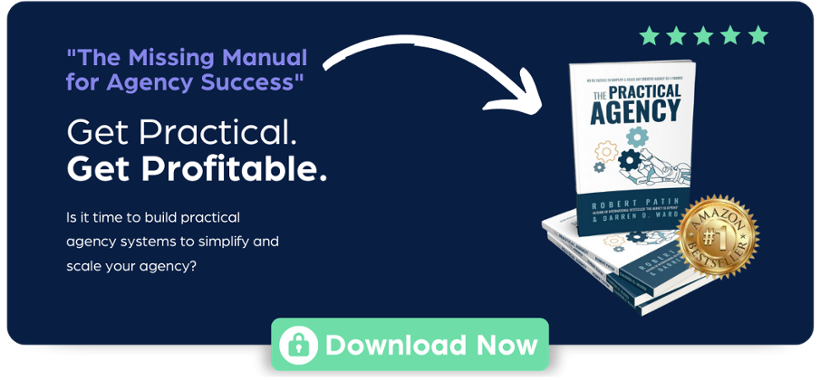
If you’re a creative agency owner, there’s a 90% chance you’ve made this mistake:
Your calendar is jam-packed with meetings, your inbox is overflowing, and you're juggling multiple projects. Great, right? So much so that you haven’t taken a real look at your bank account in months, let alone stopped to think about your agency's bottom line.
But unexpectedly, your primary client calls it quits, and you suddenly realize that cash flow isn’t as stable as you thought it was, and a financial crisis could be on the horizon. You’re left with the brutal truth which is: generating revenue doesn't equal profitability.
The warning signs your agency is headed for financial hot water

If your agency’s bank account has plateaued despite taking on more clients, you are long overdue for an operational upgrade. Because if your foundational processes (like your pricing or scope agreements) are working against you, your agency will never succeed no matter how many clients you sign.
This often looks like:
- You're swamped with admin tasks, leaving you little time to focus on what you do best.
- You're hanging on to clients that pay but don't align with your agency's long-term goals.
- Competing solely on price, creating a downward spiral of decreasing profits.
- Consistently going beyond the initial scope of work, without charging extra.
- Onboarding team members without a clear ROI for each position.
- Investing in every new software tool without evaluating its impact on your bottom line.
Finances can be intimidating - so much so that 90% of creative agency owners struggle to see profitability. Luckily, we’ve got the winning strategy that will ensure you snag your spot in that top 10%, and finally get a taste of the financial freedom you’ve dreamed of.
Mistake 1: Offering Too Many Services
The urge to please everyone can be overwhelming, especially in the start-up stage when you’re working with a limited network. But be warned: casting a wide net means you also catch a lot of dud fish - so be prepared to waste time and resources on prospects that will never convert, or endless projects that end up costing more than they were worth.
Instead of becoming more efficient at solving a specific problem, you will never be able to scale your operations to financial freedom.
Watch out for: Overextending yourself quickly leads to delivering subpar results, hurting your reputation and diminishing your expertise.
The Fix: Take some time to think about your ideal client. What problems are they currently struggling with? What aspirations do they have? Once you identify what your ideal client needs, you can tailor your services to solve those specific issues. You’ll be viewed as an expert at solving a specific problem (that can charge higher prices), instead of a mediocre solution to a few problems.
Mistake 2: Outdated Pricing Model
Being stuck in an hourly billing or fixed-cost model is like driving a sports car in econ mode—no matter how powerful your engine, you're never going to reach your full potential. Utilizing these outdated pricing methods commoditizes your skills and creativity, making you indistinguishable from any other agency.
Watch out for: The hourly trap can limit the growth of your revenue and discourage long-term commitment from clients. As for fixed-cost pricing, it's often a race to the bottom; you'll either undercut yourself or lose potential clients to cheaper competitors. Additionally, these models fail to incentivize efficiency and innovation within your team.
The Fix: Switch gears to value-based pricing. This requires deep dives into your client's business to understand not just what they need but the value of what they need. Imagine being able to charge based on the worth of the solution you provide rather than the time it takes to provide it. Now your pricing model turns into a differentiator that establishes you as a strategic partner rather than a service-for-hire, making it easier to secure long-term, recurring revenue relationships.
Mistake 3: Lack of Scope Definition
Being accommodating and flexible is often seen as good business etiquette. However, constantly saying "yes" without considering the scope can quickly become Pandora’s box.
Watch out for: Being too agreeable or vague about deliverables and expectations sets the stage for clients to push boundaries. They'll ask for 'just one more thing,' and soon enough, you find yourself doing extra work without extra pay, denting your profitability and overstretching your team.
The Fix: Implement a rigorous 'Scope of Work' discussion during your onboarding process. This should detail not just the deliverables but also the boundaries of what is and isn't included in the agreed-upon price. Make it clear what additional work will cost and get the client agreement in writing. This sets the tone for a respectful, transparent working relationship, where you're not just an order-taker but a valuable consultant who knows where to draw the line.
Bottom Line or Flatline: Time to Rethink Your Agency's Profit Strategy
It's easy to get lost in the hustle and bustle of running a creative agency. But it's essential to pause and scrutinize your financials. Are you genuinely profitable or just busy?
If your agency's financial health isn't where you'd like it to be, consider seeking professional advice. Make the changes needed to transform your revenue into real profit, and watch your agency flourish like never before.
